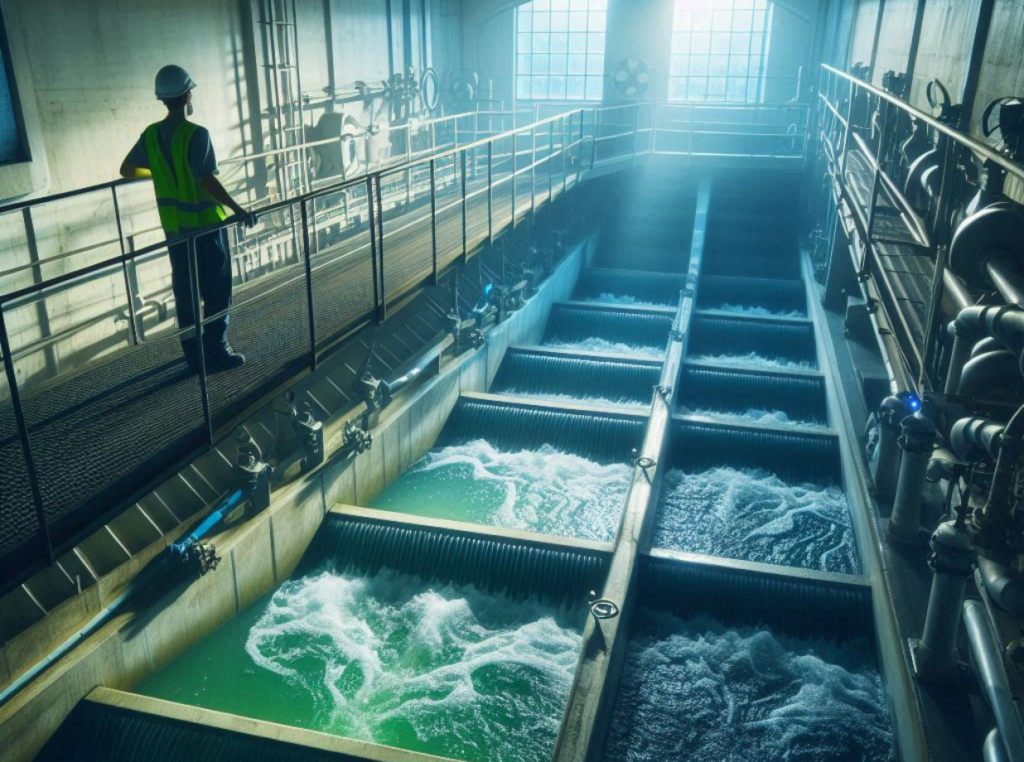Biochemical Oxygen Demand (BOD) is a crucial parameter used to measure the amount of dissolved oxygen required by microorganisms to decompose organic matter in water. BOD5 testing, specifically, measures the amount of oxygen consumed by microorganisms over a 5-day period. This test is essential for assessing the organic pollution levels in water bodies and determining the effectiveness of wastewater treatment processes.

However, BOD5 testing is not without its challenges, and overcoming these challenges is crucial for obtaining accurate and reliable results. BOD5 testing is a widely accepted method for assessing water quality and is used by environmental agencies, wastewater treatment plants, and research institutions. The test involves incubating a water sample with a seed culture of microorganisms for 5 days, during which the oxygen consumption is measured.
The results of the test provide valuable information about the level of organic pollution in the water, which is essential for making informed decisions about water management and treatment processes. However, there are several factors that can affect the accuracy of BOD5 testing results, and it is important to understand and address these challenges to ensure the reliability of the test.
Key Takeaways
- BOD5 testing is a crucial method for measuring the amount of dissolved oxygen consumed by microorganisms in water samples over a 5-day period, providing valuable information about water quality.
- Factors such as temperature, sample preservation, and interference from inhibitory substances can significantly affect BOD5 testing results, leading to common challenges in the process.
- Overcoming sample preservation issues can be achieved by using proper preservation techniques such as adding chemicals like sulfuric acid or storing samples at low temperatures to prevent microbial activity.
- Addressing temperature control and incubation challenges is essential for accurate BOD5 testing, and can be achieved by using precise temperature control equipment and monitoring incubation conditions closely.
- Strategies for dealing with interference from inhibitory substances include diluting the sample, using alternative testing methods, or employing specialized treatments to neutralize the interfering substances, ensuring accurate BOD5 testing results.
Factors Affecting BOD5 Testing Results
Several factors can influence the accuracy of BOD5 testing results, including sample preservation issues, temperature control and incubation challenges, and interference from inhibitory substances. These factors can lead to inaccurate measurements and unreliable data, which can have serious implications for water quality assessment and treatment processes. It is essential to understand these factors and implement strategies to overcome them in order to obtain accurate and reliable BOD5 testing results.
Sample preservation is a critical factor that can significantly impact the accuracy of BOD5 testing results. Improper sample preservation can lead to changes in the organic matter content of the water, which can affect the oxygen consumption during the incubation period. In addition, temperature control and incubation challenges can also affect the accuracy of BOD5 testing results.
The incubation period is crucial for allowing microorganisms to consume oxygen and decompose organic matter, and any deviations from the optimal temperature range can lead to inaccurate measurements. Furthermore, interference from inhibitory substances present in the water sample can also affect the reliability of BOD5 testing results. These substances can inhibit the growth and activity of microorganisms, leading to lower oxygen consumption and inaccurate BOD5 measurements.
Understanding these factors and implementing strategies to overcome them is essential for obtaining accurate and reliable BOD5 testing results.
Common Challenges in BOD5 Testing
One of the most common challenges in BOD5 testing is sample preservation. Proper preservation of water samples is crucial for maintaining the integrity of the organic matter content and preventing changes that can affect the accuracy of BOD5 measurements. Improper sample preservation can lead to changes in the organic matter content of the water, which can result in inaccurate BOD5 measurements.
To overcome this challenge, it is important to use appropriate preservation methods such as adding chemical preservatives or keeping the samples at low temperatures to prevent microbial activity and organic matter degradation. Another common challenge in BOD5 testing is temperature control and incubation challenges. The incubation period is critical for allowing microorganisms to consume oxygen and decompose organic matter, and any deviations from the optimal temperature range can lead to inaccurate measurements.
To overcome this challenge, it is important to maintain proper temperature control during the incubation period by using incubators or water baths with precise temperature control capabilities. Additionally, it is important to monitor the temperature throughout the incubation period to ensure that it remains within the optimal range for microbial activity.
Overcoming Sample Preservation Issues
| Challenges | How to Overcome Them |
|---|---|
| Interference from other substances | Use selective filtration or chemical treatments to remove interfering substances |
| Sample preservation | Use appropriate preservation methods such as refrigeration or chemical additives |
| Calibration and standardization | Regularly calibrate equipment and use certified standard solutions |
| Biological variability | Use replicate samples and control charts to monitor variability |
| Time constraints | Plan testing schedule in advance and allocate sufficient time for accurate measurements |
To overcome sample preservation issues in BOD5 testing, it is important to use appropriate preservation methods to maintain the integrity of the water samples. One common method of sample preservation is the addition of chemical preservatives such as sodium azide or mercuric chloride, which can inhibit microbial activity and prevent changes in the organic matter content of the water. Another method is to keep the samples at low temperatures (4°C) to slow down microbial activity and organic matter degradation.
It is important to choose the appropriate preservation method based on the specific requirements of the test and to follow standard protocols for sample preservation to ensure accurate BOD5 measurements. In addition to using appropriate preservation methods, it is also important to handle and store the samples properly to prevent contamination and changes in the organic matter content. Samples should be collected in clean containers and stored in a dark, cool environment to minimize microbial activity and organic matter degradation.
It is also important to analyze the samples as soon as possible after collection to minimize changes in the organic matter content and ensure accurate BOD5 measurements.
Addressing Temperature Control and Incubation Challenges
To address temperature control and incubation challenges in BOD5 testing, it is important to use incubators or water baths with precise temperature control capabilities to maintain the optimal temperature range for microbial activity. It is also important to monitor the temperature throughout the incubation period to ensure that it remains within the optimal range. Additionally, it is important to use appropriate seed cultures of microorganisms that are capable of thriving within the specified temperature range for BOD5 testing.
By addressing temperature control and incubation challenges, it is possible to obtain accurate and reliable BOD5 measurements that reflect the true organic pollution levels in water bodies. Another strategy for addressing temperature control and incubation challenges is to use multiple replicates for each sample to account for any variations in microbial activity and oxygen consumption. By using multiple replicates, it is possible to obtain a more accurate representation of the oxygen consumption by microorganisms over the 5-day incubation period.
It is also important to follow standard protocols for incubation and measurement procedures to ensure consistency and reliability in BOD5 testing results.

Strategies for Dealing with Interference from Inhibitory Substances
To deal with interference from inhibitory substances in BOD5 testing, it is important to use appropriate dilution techniques to minimize the effects of these substances on microbial activity and oxygen consumption. Dilution techniques can help reduce the concentration of inhibitory substances in the water sample, allowing microorganisms to thrive and consume oxygen more effectively during the incubation period. It is also important to use appropriate seed cultures of microorganisms that are capable of tolerating inhibitory substances present in the water sample.
Another strategy for dealing with interference from inhibitory substances is to conduct toxicity tests on the water samples before performing BOD5 testing. Toxicity tests can help identify any inhibitory substances present in the water sample that may affect microbial activity and oxygen consumption during the incubation period. By identifying these substances, it is possible to take appropriate measures to minimize their effects on BOD5 measurements and obtain more accurate and reliable results.
Best Practices for Ensuring Accurate BOD5 Testing Results
In addition to addressing specific challenges in BOD5 testing, there are several best practices that can help ensure accurate and reliable results. One best practice is to follow standard protocols for sample collection, preservation, incubation, and measurement procedures to ensure consistency and reliability in BOD5 testing results. It is also important to use appropriate quality control measures such as using blank samples and reference standards to monitor the accuracy and precision of the test.
Another best practice is to calibrate equipment such as dissolved oxygen meters and spectrophotometers regularly to ensure accurate measurements of oxygen consumption during BOD5 testing. It is also important to use appropriate quality assurance/quality control (QA/QC) measures such as using certified reference materials and participating in proficiency testing programs to validate the accuracy and reliability of BOD5 testing results. In conclusion, BOD5 testing is a crucial method for assessing water quality and determining the level of organic pollution in water bodies.
However, there are several challenges that can affect the accuracy of BOD5 testing results, including sample preservation issues, temperature control and incubation challenges, and interference from inhibitory substances. By understanding these challenges and implementing appropriate strategies, it is possible to obtain accurate and reliable BOD5 measurements that reflect the true organic pollution levels in water bodies. Following best practices for ensuring accurate BOD5 testing results is essential for making informed decisions about water management and treatment processes based on reliable data.
Additional Resources
Here are five useful resources about Biochemical Oxygen Demand (BOD5) in wastewater treatment:
- EPA’s Overview of BOD5
The Environmental Protection Agency (EPA) explains the role of BOD5 in wastewater treatment, focusing on its use in secondary treatment regulations and effluent limitations in the U.S.
Dissolved Oxygen and Biochemical Oxygen Demand - Water Action Plan: BOD5 Methodology
Pollutec offers a detailed explanation of BOD5, its measurement methodologies, and its role in assessing the efficiency of biological wastewater treatment plants.
How should BOD5 be used in biological wastewater treatment? - Standard Methods for the Examination of Water and Wastewater
This guide, hosted by Standard Methods, provides detailed procedures for measuring BOD5, including the dilution method approved by the EPA.
Biochemical oxygen demand (BOD) - Biochemical Oxygen Demand (BOD) Analysis from Wikipedia
Wikipedia provides a comprehensive history and methods for BOD testing, including its significance in assessing water quality and pollution levels.
Biochemical Oxygen Demand (BOD) - Understanding BOD5 Testing in Wastewater
This article from YSI gives insights into why and how BOD5 is used to evaluate wastewater, with a breakdown of the methods and factors influencing BOD levels.
Biochemical Oxygen Demand – BOD